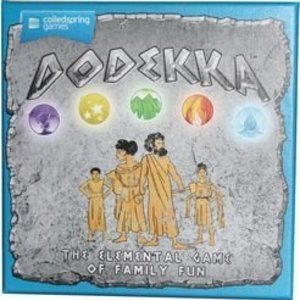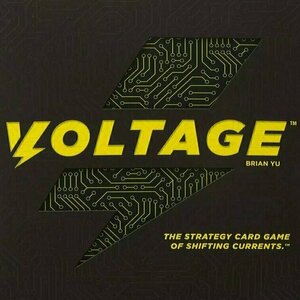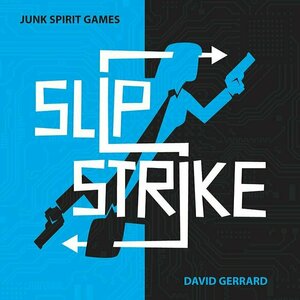Purple Phoenix Games (2266 KP) rated Dodekka in Tabletop Games
Mar 3, 2021
Dodekka is loosely named after the Greek prefix for 12, Dodeca. Twelve is a big aspect of this game. In it players are attempting to score a large value of cards from one suit while keeping other suits to a minimum, as they are negative points at the end of the game. The player with the most points at the end of the game will be crowned the winner.
DISCLAIMER: We were provided a copy of this game for the purposes of this review. This is a retail copy of the game, so what you see in these photos is exactly what would be received in your box. I do not intend to cover every single rule included in the rulebook, but will describe the overall game flow and major rule set so that our readers may get a sense of how the game plays. For more in depth rules, you may purchase a copy online or from your FLGS. -T
To setup shuffle the main deck of cards and reveal three near the deck. The game may now begin! Note: this may be the easiest setup of any game I have played.
Dodekka is played in turns where each player will take one of a choice of two actions: take a card or add a card. When a player decides to take a card they simply take the card closest to the deck into their hand. Should they wish to add a card the player will simply reveal a card from the deck and add it to the end of the line. Easy, right? Well that’s not much of a game, admittedly. Where’s the catch?
When players add cards to the end of the line they must take care not to increase the total value of the cards within the line past 12. Each suit contains cards numbered zero through four, so adding a card to the line can be quite a gamble if the total value of the cards in the line is already in double digits. Many times players will be forced to take the card closest to the deck out of fear of busting the line total. When a players busts they must take ALL the cards in the line and a new set of three will be revealed to form a new line.
However, there is a catch to this catch. A catch-ception! Should the line bust when adding a card, but the newly added card is of the matching value of the card already at the end of the line (for example adding a three when the last card is already a three) then the bust is delayed until another player brings the total value down by taking a card or busts on a failed gamble.
Play continues in this fashion of players collecting cards of certain suits to earn points or pressing their luck by adding cards to the line until the deck runs out of cards. At that point players will add up the values of the suit with the most points in their hand and subtract the NUMBER of non-scoring cards. Using the photo below for example, should the player choose to score blue they would have five points. However, they would need to subtract the number of cards from the non-scoring suit, which also equals five (two purple cards and three green cards). This will be a net zero score. The player with the most points wins!
Components. This game is a bunch of cards. The cards are all great quality and feature minimal art. The numbering text on the cards are ancient Greek-themed and work for me. I actually like that the art gets out of the way of the cards and allows the numbers and suit colors to shine. Although, I try to be conscious of our colorblind friends and Dodekka is also considerate here by the addition of different art for each suit to help these players be successful. I have no qualms with any of the components here.
All in all, this game is quite similar to another favorite of ours: No Thanks! In each, players are trying to keep away from gaining a bunch of cards that will negatively impact their final scores. Also in each is the element of press your luck that I find simply delicious. You try to wait as long as possible sometimes so as not to get stuck with the bad card(s) but sometimes that gamble blows up in your face. I just love it!
What I like better in Dodekka than I do in No Thanks! is that there is so little to setup that this can be taken almost anywhere and played without any real concern for losing or damaging components. Being solely cards and setup just being a deck with three exposed cards is so simple that players I have introduced to Dodekka are floored that they don’t receive any cards or have anything at setup. It is just refreshing to start a game that can be setup in 10 seconds or less, depending on shuffling skills.
I really don’t want to say this because I love No Thanks! but I may have found its replacement. Dodekka is light, fast, and gives the same level of heart-racing excitement when you need to add a card to the line when it is at 11 already and showing a three at the end. Can you risk pulling a 0, 1, or 3 to remain cool, or will a 2 or 4 be your downfall and cause you to take the lot? It’s wonderful! If you are looking for a small card game that is an excellent little filler and has interesting twists on familiar mechanics, I recommend you grab a copy of Dodekka. Purple Phoenix Games gives this one an under-the-radar 10 / 12. Go grab your trusty dodecahedrons (or borrow mine – my Monk doesn’t use it for anything) and get Dodekka to the table!
Purple Phoenix Games (2266 KP) rated Voltage in Tabletop Games
Jan 8, 2022
Voltage is a competitive game for 2 players in which players are trying to be the first to earn 4 total points. To setup for the game, place the board between the two players. Take the double-sized Terminal blocks and place them on their corresponding spaces of the board. The starting orientation for the Terminal blocks should read + – – + horizontally across the board. Shuffle the deck of cards and deal 4 to each player. Each player selects a Score Marker and places it on the first space of their score track. Choose a starting player, and the game is ready to begin! Pictured below is the starting setup for a game.
Over a series of turns, players will be playing cards to their corresponding colored Terminals in an attempt to win the set. If the Terminal is set to a + then the player with the highest value will win the set. Alternately, if the Terminal is set to a – then the player with the lowest value will win the set. Cards are played to Terminals until a Terminal has a set of 5 total cards. The Terminal is then scored, the cards used are discarded, and the winning player earns a point. The game continues in this fashion until one player has earned 4 total points.
On your turn, you must perform one of these three actions: Play a card & draw a card, Play 2 cards, or Draw 2 cards. Simple enough, but the strategy is what makes this game. When playing cards to the different Terminals, there are a few placement rules to keep in mind. Of course, you may only play cards to the Terminal of the matching color. You are allowed to play cards on your side of the Terminal, or on your opponent’s side. Now to get to the actions themselves. If you choose to play a card and draw a card, you must do so in that order. If you choose to play 2 cards, you must play both cards on different colors – you cannot play both to the same Terminal. The last action, draw 2 cards, is self-explanatory.
The cards of the game are numbered from 1-3, and are of the 4 Terminal colors. There are 3 types of special cards: Bypass, Blown Fuse, and Transformer. A Bypass card allows you to move a card from your opponent’s side to your side of the Terminal, and a Blown Fuse allows you to remove a card from your opponent’s side completely from play. Both of these types of cards count toward the 5-card maximum of the Terminals, so use them wisely. A Transformer is identified by the card back – if the V logo is colored Yellow. When you draw a Transformer, you must then flip one of the Terminal blocks to its opposite side. Since the draw deck is always visible, you can see when a Transformer card is next, so that could help inform your strategy for your turn. The game continues in this fashion of alternating player turns until one player has earned 4 total points. They are declared the winner!
I have to say that the gameplay of Voltage really surprised me. I went into my first play expecting a light little game, and what I got was so much more. There really is a pretty decent strategic element to this game that caught me a little off guard at first. The gameplay itself seems simple – draw cards, play cards, win sets to earn points. But how you accomplish that is more challenging that it seems. The ability to play cards to your side or your opponent’s allows you to try to tip the scales in your favor. You can’t simply focus on your side alone, you need to keep tabs across the entire board to inform your next move. And then if your opponent draws a Transformer, they could just as easily reverse the polarity of that Terminal and now you’re on the wrong end! When playing 2 cards, they must be played to different colored Terminals, so how can you place your cards so they are most beneficial to you? Do you risk placing the big numbers right away in hopes of winning a + Terminal, or do you play lower-numbered cards in case that Terminal gets flipped? All things to consider throughout the game. Along with the strategy, one thing that I love about Voltage is that there really is no runaway winner each time – the direction of a set can literally change with one card, and neither player can really feel secure during the game. You have to anticipate your opponent’s moves while trying to complete sets that are currently favorable to you. That all being said, I guess there is a bit of a ‘take that’ element in the gameplay that might seem a little aggressive to some players, but that’s kind of just the nature of this head-to-head gameplay.
To touch on components, this game is pretty basic. The cards are nice quality, and the artwork is electrical and thematic. The board itself is nice and thick, and the spaces are all clearly marked. The Terminal blocks are probably my favorite components of this game. They are nice chunky plastic blocks, and the colors are bright neon colors – some of my favorites! For a game with such few components, the quality of them is appreciated.
After playing Voltage with Travis at The Table, I actually came home and found a copy for myself – that’s how much I liked it! I don’t think it’s my all-time favorite 2-player game yet, but it’s certainly working its way up the list…. If you’re in the market for a fast, yet strategic, 2-player game, I would highly recommend giving Voltage a try. The simplicity of the gameplay coupled with the vast strategic options makes for an engaging and entertaining game. Purple Phoenix Games gives this one an electrifying 9 / 12.
Rhubarbio (27 KP) rated The Resistance: Avalon in Tabletop Games
May 25, 2019
This is essentially a bluffing game where you just convince others that you are good and, inevitably, accuse others of being bad. This game, for the right group, is hours of fun! You need a ln engaged group of people who are willing to chat and be enthusiastic about engaging with this; the game and fun C Mrs from this interaction, and layer dissecting who was good and bad and how they fooled or misled everyone. I thoroughly recommend this game for gateway gamers i.e. those making the transition from everyday well known games such as Monopoly, to more designer games that have flourished over the past 20 years or so.
This game, whilst great, falters at lower or highest playcounts. At the lower end, it is very difficult to play as a bad guy, unless you use other roles included in the game. At the higher gamecount, things get very confusing and overly exhausting. However, this is an exceptional game and is likely only bettered as a bluffing game by the soon to be released Blood on the Clocktower.
I have played this hundreds of time, with the same group of people. Whilst I am now fatigued by the game, given this game only costs around £15, it is a solid investment for so many hours of fun.

Schau mal! Was ist anders?
Tabletop Game
Was the dolphin jumping out of the water or into it? Was the traffic light red or green? Wasn’t...
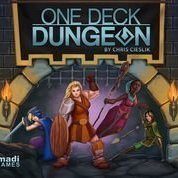
One Deck Dungeon
Tabletop Game
One Deck Dungeon is a card game "roguelike" — a dungeon delve that is different every time,...
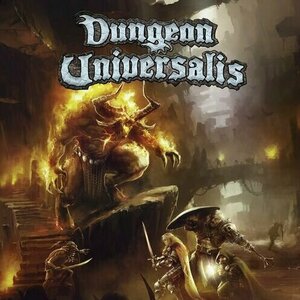
Dungeon Univeralis
Tabletop Game
A classic Dungeon Crawler board game for 1 to 6 players (Age 12+). The game includes many game...

Dragons Wild
Tabletop Game
A fast playing card game based on Rummy, with a deck of 1-8 number cards in 8 suits, each a...

Happy Salmon
Tabletop Game
Description from the publisher: Happy Salmon is a simple, ultra-fast, very silly card game. ...
Purple Phoenix Games (2266 KP) rated That Snow Moon in Tabletop Games
Jun 12, 2019 (Updated Jun 12, 2019)
That Snow Moon is a card game of dexterity, mixed with some bluffing. Players are divided between two ‘teams’ – the Liberation (good guys) and the Dynasty (bad guys). The goals are simple. The Liberation is trying to assemble a set of plans to be used in the destruction of the Snow Moon. The Dynasty is trying to destroy the Liberation base and stop them from acquiring those plans. I don’t know about you, but if they turned this into a movie, I would probably watch it.
Here’s the kicker though – you don’t simply PLAY cards in this game. You toss/drop them. Yep, you read that right. In this game, you throw cards. Each team takes turns tossing cards into the play area, in hopes of creating clusters of touching cards that activate powers to aid in the completion of their respective goals. Bluffing comes into play because Liberation cards can be played face-down, and remain that way until exposed by a Dynasty card. Can you trick the Dynasty into revealing a card whose power you want to use, or will they see through your ruse and expose and eliminate your more powerful cards? On the flip side, can you foil the plans of the rebellious Liberation, or will they be sly enough to avoid detection? The final fate of your galaxy is up in the air – literally.
The premise of this game sounded really cool to me, but when I actually got to play it, it was quite….underwhelming. In theory, tossing cards puts a unique twist on the standard card game. But the unpredictability of actually tossing/dropping cards makes this game way more luck-driven than strategic to me. It should be noted that we have a PnP of this game – sleeved and with regular playing cards added to beef up the cards. Maybe if we had a retail version, the cards would be easier to manipulate? I’m not sure. At times it just felt futile to try to strategize certain tosses because they cards are going to fall where they may. The actual gameplay is a little bland too – it feels like it’s missing something. Maybe adding more action options or more complex/powerful card powers would up the ante a little bit. The game, as is, just kind of feels like 16-Card-Pick-Up to me.
As a huge fan of the brand-name muse of this game, That Snow Moon fell flat for me. It feels a little too simple, yet wildly unpredictable at the same time. Is it a game I’d pull out to play again? I don’t know – maybe? It’s not high on my list. That snow joke, Purple Phoenix Games gives it a disappointing 9 / 18.
https://purplephoenixgames.wordpress.com/2019/05/30/that-snow-moon-review/
Purple Phoenix Games (2266 KP) rated Slip Strike in Tabletop Games
Jan 28, 2020
Slip Strike is a card game of bluffing, running, and managing your resources. The goal of the game is to get one hit on your opponent: the final strike. This could come from a bullet, a knife wound, or several other injuries that lead to your opponent’s demise. You each have ways of “slipping” out of trouble, but they are limited and certainly give your opponent the upper hand.
DISCLAIMER: We were provided a prototype copy of this game for the purposes of this review. These are preview copy components, and the final components will probably be different from these shown. Also, it is not my intention to detail every rule in the game, but to give our readers an idea of how the game plays. If you would like to read the rulebook, you may purchase the game through the publisher, back the game through the Kickstarter campaign, or through any retailers stocking it after fulfillment. -T
To setup, each player chooses a color (in this edition either blue or black) and receives the cards and spy-eeple (speeple?) of that color. Randomly place the location cards in a circle, or pentagon shape, to mark the map. Each player will select a location card at which they would like to begin the game, and reveal these simultaneously. Players will place their speeples on those locations and the game is setup and ready to play! For a more hardcore game, you may include one or two special Asset cards. We did that.
Slip Strike has no “turns” in the traditional sense. Instead, players will be choosing two cards to be played in succession. These cards are all from their hands and can include movement, teleportation, and weapon cards. Once the players have set their two cards in front of themselves, the cards in the first slot will be revealed simultaneously and resolved. Movement happens first, then any teleportations, then weapon effects.
If a player chose to play a movement card (left or right), simply move the speeple one space in that direction. Teleportation cards have the speeples moving directly to the location specified on the card. Weapon cards will have text on them referring to which spaces will be affected by the weapon – same space, one space away, or two spaces away usually. Should an enemy speeple reside in a space and is to be hit, the attacking player either wins with a successful strike or the defending player will need to “slip” to another location by playing (and therefore also discarding) a location card. This location card is now out of play and essentially is used as a countdown to their end, as players only have one card per location to use for a future slip.
Each card will also feature a cooldown number on it. This number reflects how many game rounds this card will need to sit on the table before it can be shuffled back into the player’s hand. I believe this to be the greatest aspect of this game: utilizing the cool downs effectively in order to exact the most damaging tactics for victory. Some more powerful cards will also show an asterisk in place of a cool down number. This means that the card must remain out of play for three or more rounds before entering the player’s hand (see photo below for the Flamethrower Asset).
The player that can guess their opponent’s next moves, play their corresponding cards, and whittle down the location slips the fastest will become the ultimate spy and someone I definitely do NOT want to play against.
Components. As previously mentioned, we were provided a prototype copy of Slip Strike, and the components may change during the Kickstarter campaign. That said, this game is a bunch of cards and two speeples. The cards look incredible and the art is spot-in with the theme. I quite enjoy the art style and it stays out of the way while playing, but is also interesting enough that you can spend lots of time inspecting it when playing against AP-prone opponents. The speeples are cool, and I am excited to see where they end up as a result of a successful Kickstarter campaign. All thumbs up from us on components!
The game play is super solid. We had no questions on how to play the game after reading the rules (which are super short – thank you!), and we were off to murder each other in seconds flat. What I really appreciate about this game is that anyone can be successful with it and really get into the theme. Do you want to play as Agent Smith from The Matrix? Go for it! Want to play as Hiro Nakamura from Heroes (when he could control his powers, that is)? Do it! Slip Strike is quick, super engaging, and gives me the feeling of high-stakes, adrenaline rushing, globetrotting secret agents that I have been looking for. If you are interested in picking this one up, consider backing it on Kickstarter, purchasing from the publisher directly, from your FLGS, or your favorite online retailer once this one hits market. You won’t regret it.
